
Who Do You Think You Are?
Who Do You Think You Are? Magazine is produced by the BBC. Click here to subscribe.Something Old, Something New...
TheGenealogist.co.uk has the most comprehensive set of marriage records to help you uncover the daily lives of your forebears.
As your ancestors walked down the aisle or stepped into registry offices to plight their troth, little did they know that the records these events generated would be so essential to their family historian descendants decades later.
TheGenealogist.co.uk holds a host of marriage records that will help establish your ancestors' family ties. These now include the newly transcribed marriages (1912-2005), bringing the site's collection of such records to more than 60 million.
Now you no longer have to trawl through the quarterly General Register Office marriage indexes to find the happy couple. Using the new data set, you can use a name to pinpoint an individual marriage, together with the spouse - it even generates a virtual certificate for you to print out and add to your records.
An ongoing series of additions is planned, with marriage record transcripts as far back as 1837 due to go online.
Marriage records are a genealogical treasure trove and a vital link in the chain of documentation that allows you to trace your family back through the generations. Those kept from 1837 under civil registration not only tell you the bride and groom's names, their occupations, their addresses and often their ages, but also the names of their fathers, while relatives and friends often witnessed the event allowing you to glean more about family links.
Additionally, whether or not the happy couple signed their names will tell you whether they were literate.
Parish Registers
TheGenealogist.co.uk's parish register connection allows you to track down marriages that took place before civil registration. Content of the entries varies depending on the parish, but the later ones - particularly in the 19th century - can hold as much detail as the civil registration records.
Earlier records may only give you the names of the bride and groom with, in some cases, their parish (if not the one the marriage took place in) and sometimes the groom's occupation. Nevertheless, they can still provide vital clues.
Nonconformists
If you can't find your ancestors' marriage in the parish registers, you may find them in records of nonconformist marriages - ie, those conducted outside the established church. TheGenealogist.co.uk holds the official database of these records, which you can find under its BMD section in 'BMD Registers'.
Here you'll discover over 8 million records for Methodists, Presbyterians, Baptists and Quakers, among others. The documents generated by Quaker marriages are very interesting from a family history point of view as they record the names of everyone present at a marriage and so can give a wider picture of the extended family group.
Fleet marriages can also be found under 'BMD Registers'. The term refers to marriages conducted quickly or in secret within the walls of the Fleet Prison in London, which was outside the normal jurisdiction of the Church. So if there's a marriage you can't locate before 1754 when an Act was brought in to stop the Fleet's practice, TheGenealogist.co.uk is a good place to look for it.
Forename Search
Found a marriage record and now you're trying to locate a husband and wife in the census?
TheGenealogist.co.uk's forename search tool can help you find married couples using combinations of names (you can include children's names too) without any need to input the surname. You can refine results by relationship and by birth year or decade. This is particularly useful if you are researching a common name or one with various different spellings.
Access to the new records is available through TheGenealogist.co.uk's Premium membership, which starts at £29.95.
So, what are you waiting for? Visit TheGenealogist.co.uk today and discover when, where and with whom your ancestors tied the knot.
Step-by-step guide to searching the new digitised marriage records
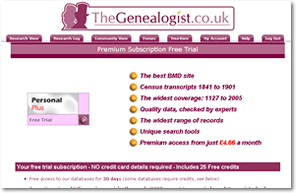
1. Log into the site
Go to www.thegenealogist.co.uk and, if you are already a subscriber, log in. If you aren't, a free trial is available. Here, follow the instructions at the bottom of the page to access your free trial subscription.
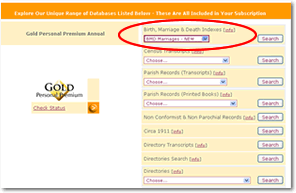
2. Locate the database
On the home page, scroll down to the database collection listed on the right of the screen. Under 'Birth, Marriage and Death Indexes' select 'BMD Marriages - NEW' and click 'Search'.
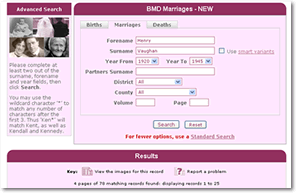
3. Search the records
Enter your search criteria including forename, surname and year of marriage (at the moment the indexes only span the years 1912-2005). Clicking on 'Advanced search' allows you to search using the spouse's name and county.
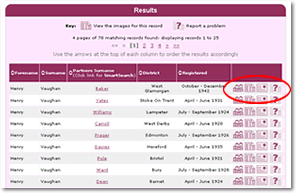
4. Pinpoint the entry you want
Find the correct entry in the list of search results that comes up. The icons to the right of the listing give you three options. Select the first to view the full record and the last to report an indexing problem.
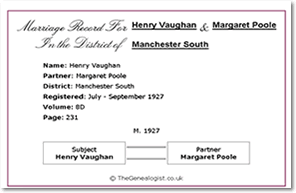
5. Generate a virtual marriage certificate
If you choose the second option, your ancestors' marriage details will be brought up in the form ofa virtual marriage certificate. From this page you can also access the original index page by clicking the icon below the certificate in case you need to double-check the information.
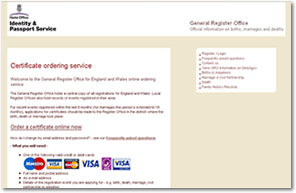
6. Order a certificate from the General Register Office
Click on the link at the bottom of the page to be redirected to the General Register Office website, where you can use its certificate ordering service to get a hard copy of the certificate by following the instructions. Or you could just click 'Print Record' for a hard copy of TheGenealogist.co.uk's certificate.